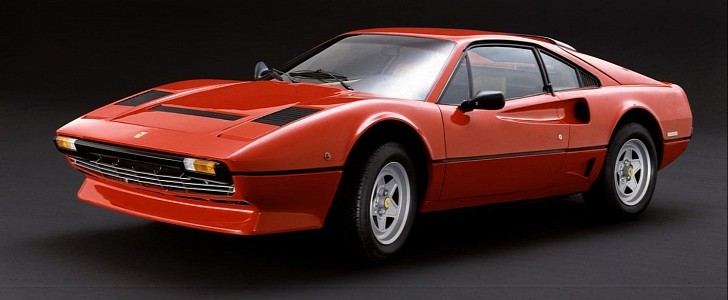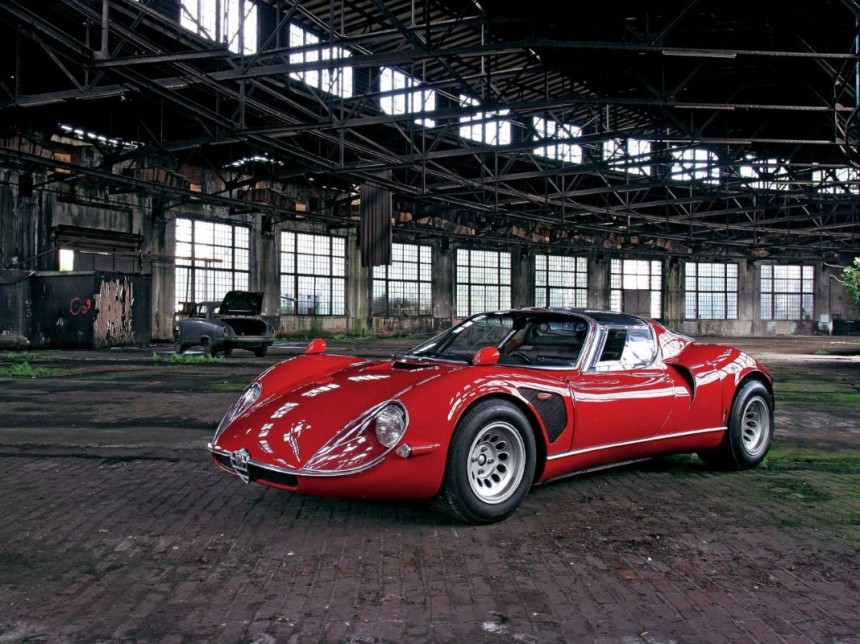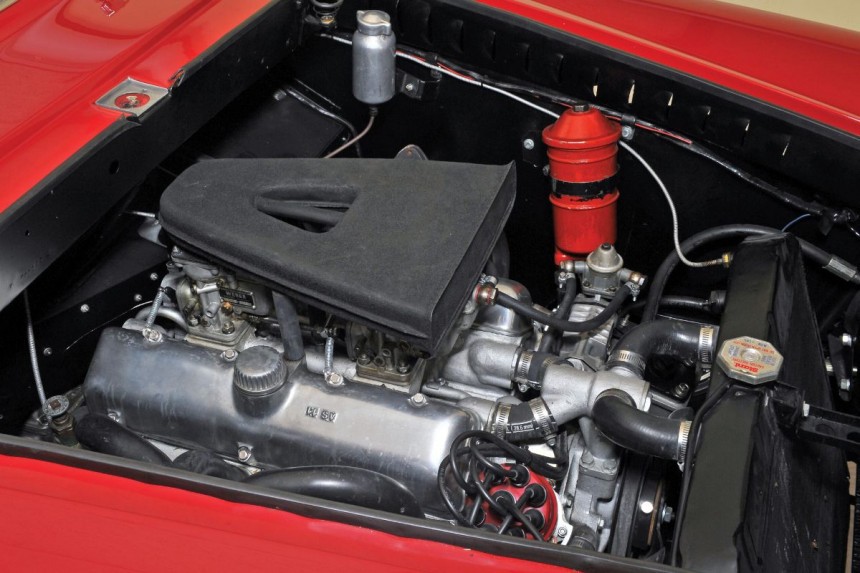Usually, when you think of a V8 engine, you think about a big displacement. However, that is not always the case. The automotive industry is not just full of huge V8s. There are a lot of small ones that actually were quite good.
As a result, we take a look at the smallest V8 power units ever mounted on production vehicles. Let's jump straight into it.
Ferrari 208- The Ferrari 208 was created mainly for the Italian market because, at that time in Italy, new cars with engines above two liters were subjected to a 38% value-added tax instead of 18%. The 208 was considered the slowest Ferrari ever, but later on, some turbo versions emerged. Thanks to their long history of participating in competitions such as Formula 1, Ferrari was outstanding when they needed to extract the most out of a small displacement. Besides, the engine sound was as lovely as any Ferrari power unit. Based on the same Dino V8 design, the naturally aspirated 208 had a power output of 155 hp (157 PS), while the turbocharged model produced 220 hp (223 PS).
Lamborghini Urraco P200- The Lamborghini Urraco had three V8 engine models. The most popular choice was the 2.5-liter P250 with a power output of 217 hp (220PS) with 162 lb-ft (220 Nm) of torque, while the most powerful and exciting one was the 3.0-liter P300 with 247 hp (250 PS) and 195 lb-ft (265 Nm) of torque. However, Urraco was made in the 1970s when the Italian tax law we discussed earlier was introduced. As a result, the engineers from Lamborghini created a 2.0-liter V8 option called the P200 that produced 180 hp (182 PS) and 130 lb-ft (176 Nm).
When production ended in 1979, 791 Urracos had been built, of which 21 were Urraco P111s (P250 Tipo 111s) for the American market. To respect the American regulations, these cars had larger front bumpers and had to comply with the emissions controls, resulting in less power. Unfortunately, the Urraco was overshadowed by its bigger brothers, and now it's an underrated car, often overlooked by car enthusiasts.
Alfa Romeo 33 Stradale- First was the race version called Tipo 33. Then, the Alfa Romeo engineers decided to create a road version, and they did an incredible job because the 33 Stradale is often considered one of the most beautiful cars of all time. Besides, it is one of the first production vehicles to feature forward-hinging butterfly doors and was the most expensive car of its era.
The 33 Stradale's engine was an automotive gem. The 2.0-liter V8 was closely related to the 2.6-liter unit in the Montreal model, but unlike that one, it had a flat-plane crankshaft. In addition, it was tuned more aggressively, having four chain-driven camshafts, 16 spark plugs, and a 10,000 rpm limiter with a compression ratio of 10.5:1.
As a result, the average power output was 227 hp (230 PS) and 152 lb-ft (206 Nm) in road trim and 270 hp (274 PS) in race trim. We said average because every Stradale was hand-built, and the power levels can vary by car. For example, the first production Stradale had a factory datasheet that claimed it had a power output of 243 hp (246 PS).
Simca Vedette- At its base, the Simca Vedette was a French car with an American engine. However, the story was more complicated. Henry Theodore Pigozzi wanted to expand the manufacturing operations of his successful company, Simca. At the same time, Ford wanted to get out of France. As a result, when they were about to launch their new car called Vedette, Simca bought the factory along with all the commercial rights.
The American-inspired sedan was using the 2.4-liter 136 power unit, which was the smallest engine from the Ford Flathead V8 family, called "Aquilon" in France. Producing only 75 hp (76 PS), the "Aquilon" was too lazy.
FIAT 8V- There was a time when FIAT was not building only cheap and affordable cars. Back in the 1950s, the Italian automaker produced luxury sports cars and other great vehicles. The 8V is a testimony of that time. And if you are a little confused about the name, FIAT believed that Ford owned the trademark of the V8 name, so they named their car 8V.
This was the only time the Italian brand had created an eight-cylinder car. And what a unique engine. The base tiny 2.0-liter V8 powerplant with two twin-choke Weber 36 DCF 3 carburetors produced 104 hp (105 PS). However, after some tweaks to the compression ratio, a revised camshaft timing, and others, the FIAT put out 125 hp (127 PS). While the 8V did excellent in racing competitions, it failed commercially, with only 114 models ever produced.
While there are still more tiny displacement V8 engines we could talk about, these five are the smallest ones ever mounted in production cars.
Ferrari 208- The Ferrari 208 was created mainly for the Italian market because, at that time in Italy, new cars with engines above two liters were subjected to a 38% value-added tax instead of 18%. The 208 was considered the slowest Ferrari ever, but later on, some turbo versions emerged. Thanks to their long history of participating in competitions such as Formula 1, Ferrari was outstanding when they needed to extract the most out of a small displacement. Besides, the engine sound was as lovely as any Ferrari power unit. Based on the same Dino V8 design, the naturally aspirated 208 had a power output of 155 hp (157 PS), while the turbocharged model produced 220 hp (223 PS).
Lamborghini Urraco P200- The Lamborghini Urraco had three V8 engine models. The most popular choice was the 2.5-liter P250 with a power output of 217 hp (220PS) with 162 lb-ft (220 Nm) of torque, while the most powerful and exciting one was the 3.0-liter P300 with 247 hp (250 PS) and 195 lb-ft (265 Nm) of torque. However, Urraco was made in the 1970s when the Italian tax law we discussed earlier was introduced. As a result, the engineers from Lamborghini created a 2.0-liter V8 option called the P200 that produced 180 hp (182 PS) and 130 lb-ft (176 Nm).
When production ended in 1979, 791 Urracos had been built, of which 21 were Urraco P111s (P250 Tipo 111s) for the American market. To respect the American regulations, these cars had larger front bumpers and had to comply with the emissions controls, resulting in less power. Unfortunately, the Urraco was overshadowed by its bigger brothers, and now it's an underrated car, often overlooked by car enthusiasts.
Alfa Romeo 33 Stradale- First was the race version called Tipo 33. Then, the Alfa Romeo engineers decided to create a road version, and they did an incredible job because the 33 Stradale is often considered one of the most beautiful cars of all time. Besides, it is one of the first production vehicles to feature forward-hinging butterfly doors and was the most expensive car of its era.
As a result, the average power output was 227 hp (230 PS) and 152 lb-ft (206 Nm) in road trim and 270 hp (274 PS) in race trim. We said average because every Stradale was hand-built, and the power levels can vary by car. For example, the first production Stradale had a factory datasheet that claimed it had a power output of 243 hp (246 PS).
Simca Vedette- At its base, the Simca Vedette was a French car with an American engine. However, the story was more complicated. Henry Theodore Pigozzi wanted to expand the manufacturing operations of his successful company, Simca. At the same time, Ford wanted to get out of France. As a result, when they were about to launch their new car called Vedette, Simca bought the factory along with all the commercial rights.
The American-inspired sedan was using the 2.4-liter 136 power unit, which was the smallest engine from the Ford Flathead V8 family, called "Aquilon" in France. Producing only 75 hp (76 PS), the "Aquilon" was too lazy.
FIAT 8V- There was a time when FIAT was not building only cheap and affordable cars. Back in the 1950s, the Italian automaker produced luxury sports cars and other great vehicles. The 8V is a testimony of that time. And if you are a little confused about the name, FIAT believed that Ford owned the trademark of the V8 name, so they named their car 8V.
While there are still more tiny displacement V8 engines we could talk about, these five are the smallest ones ever mounted in production cars.




























